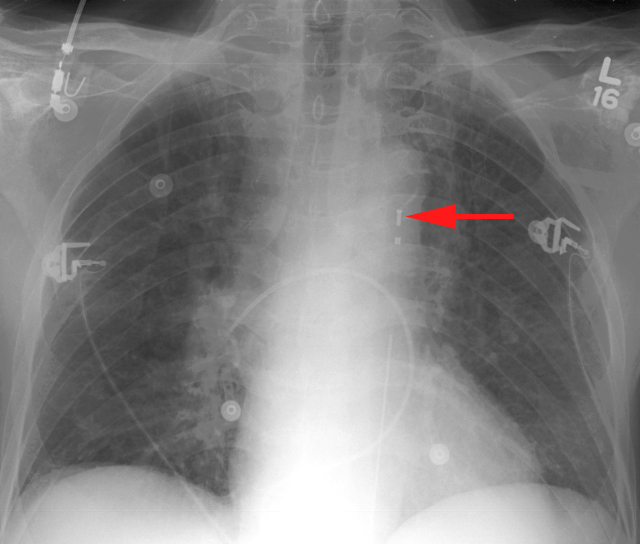ICU Chest Films > Lines and Tubes > Intraaortic Balloons
Intraaortic Counterpulsation Devices
![]()
The intraaortic counterpulsation balloon pump (IACB) is used to decrease afterload and increase cardiac perfusion in patients with cardiogenic shock. The IACB is synchronized with either the aortic pressures or the patient's EKG to inflate during diastole and deflate during systole. Generally, the IACB is introduced percutaneously through the right femoral artery. Proper positioning of the IACB is critical to prevent occlusion of major vessels. Ideally the catheter should be in the region of the aortic isthmus or left main bronchus and above the origins of the celiac trunk and superior mesenteric artery. During systole the balloon may appear as a fusiform air (helium) containing radiolucency.

The arrow shows the tip of the IACB in an optimal position.